Retro Review: Mercedes-Benz 300 SL
The Mercedes-Benz 300 SL “Gullwing” was a potent mixture of beauty, power, and innovation and perhaps the one of the greatest cars of all time.
The German G.O.A.T.
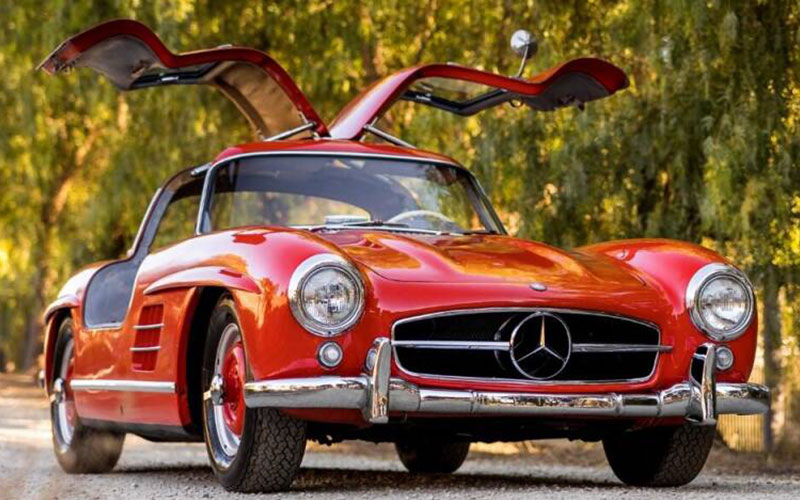
1955 Mercedes-Benz SL-Class – carsforsale.com | Shop Mercedes-Benz SL Class on Carsforsale.com
The Mercedes-Benz 300 SL “gullwing” occupies truly rarified air as one of history’s most iconic automobiles. It was, in its day, the fastest production car on the market. The darling of high-rollers and celebrities in the 1950s, the Mercedes-Benz 300 SL eventually became a touchstone for generations of car designers and engineers and one of the mostly highly sought-after collectors’ cars of all time.
Origins
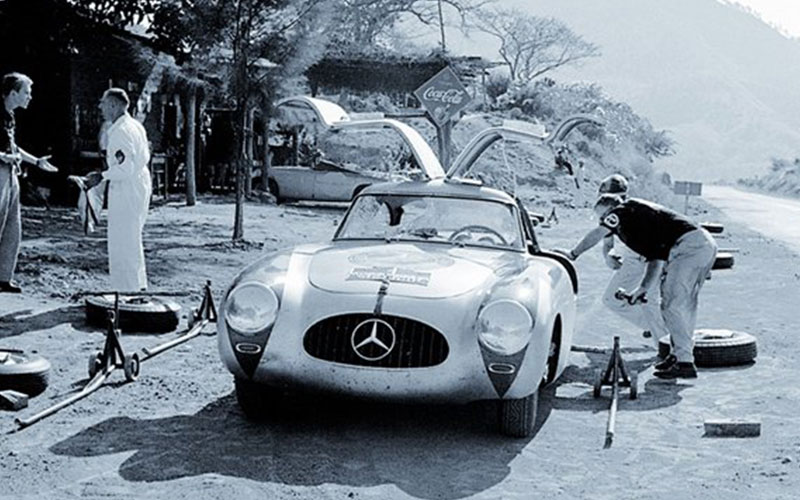
In 1953, Max Hoffman, a major importer of German cars to the US, came up the idea for what became the 300 SL. After seeing the repeated success of Mercedes-Benz’s W194 race car on the European racing circuit, Hoffman concluded he could sell a road-going version of the car to his wealthy customers. Hoffman met with Daimler-Benz’s board and convinced them to build the 300 SL. The following year the 300 SL W198 went into production, debuting February 6th in New York City at the International Motor Sports Show to enthusiastic acclaim.
Technological Innovations
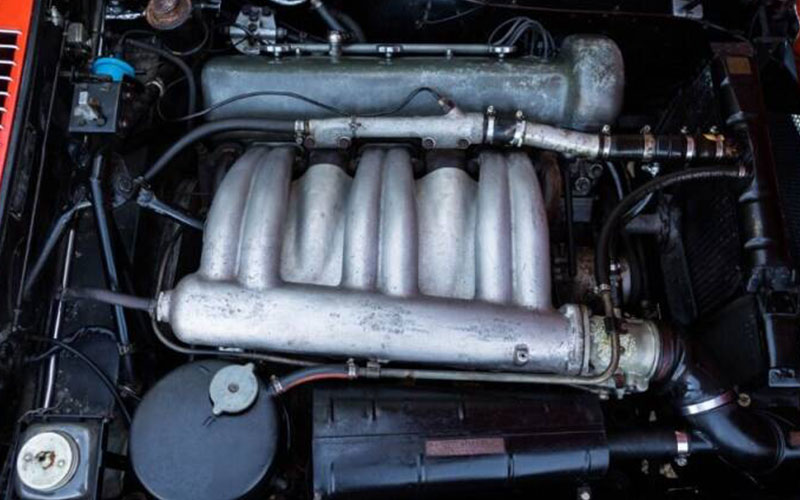
The Mercedes-Benz 300 SL was technologically far ahead of its time. The car’s engine was a 3.0L inline-6 putting down 212 horsepower and 203 lb.-ft. of torque. Impressive numbers for the 1950s, even more impressive, however, are the innovations that went into making the 300 SL the fastest production car of it’s day. A top speed of 161 mph could be reached with the right gearing.
First, Mercedes enlisted Bosch to develop a direct fuel-injection system for their new car. This made the 300 SL the first production gasoline car to feature fuel-injection. This set up nearly doubled the engine’s original output of 115 horsepower. Note, too, that the carbureted W194 racecar (upon which the 300 SL was based) only made 175 horsepower.
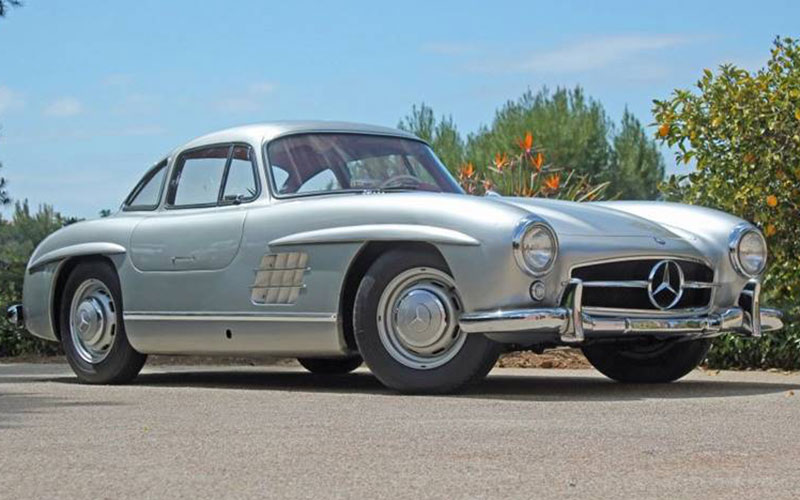
The next innovation was the engine position which was slanted to the driver’s side by 50°. This allowed engineers to keep the hood of the car and low and compact as possible while having the added benefit of lowering the car’s center of gravity. Other interesting choices included the use of a dry-sump lubrication system and a four-speed manual transmission.
Adding Lightness
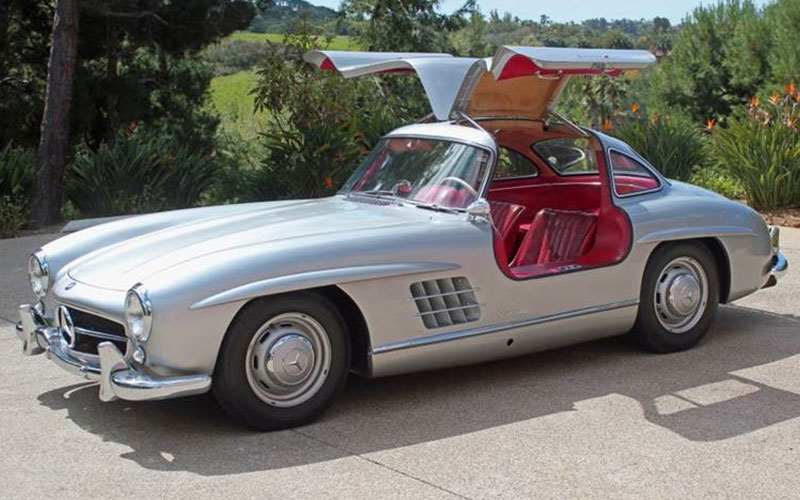
To lighten the car for racing, the W194 had been developed using a tubular frame design. This same design would be used with the 300 SL and lend the car it’s moniker the “gullwing.” This is because, to maintain the rigidity of the tubular frame, engineers wanted to keep the door sills high, so high that a traditionally hinged door wasn’t possible. Instead, they choose to move the hinge to the roof so that the doors open in an upward sweep. And thus, was born the “gullwing” name. The design proved to be both iconic and hugely influential, but Mercedes-Benz literature of the day referred to the doors simply as “trapdoors” and the car as the 300 SL coupe.
In addition to the lightweight frame, the 300 SL’s doors, hood, dash, and trunk lid were all fashioned from aluminum. Buyers could order the car’s body entirely in aluminum at considerable expense. Only 29 ever chose to do so, but those cars today now roughly quintuple the car’s already exorbitant price. All this emphasis on lightness explains the other part of the name. The SL, after all, stands for super-light.
The Ingredients of an Icon
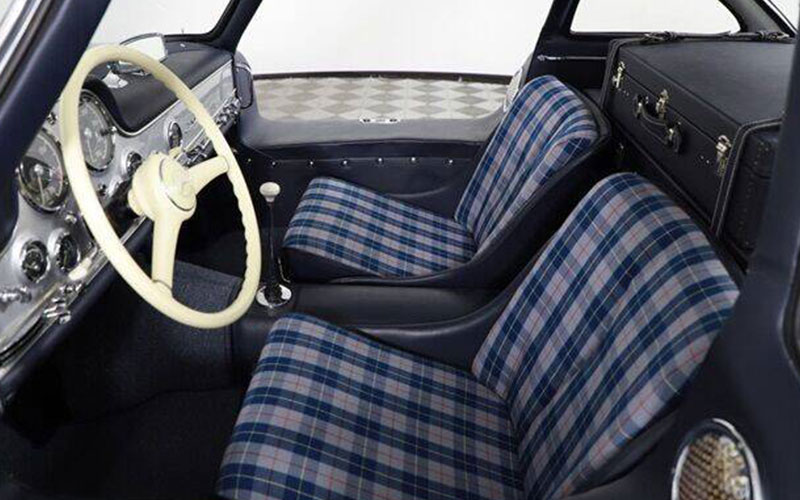
As fast and elegant as the 300 SL was it still had it’s quirks. Many of these aren’t surprising given the era or the nature of the car (a street-going version of a race car), but they add to its character, nonetheless. Take the lack of ventilation. A/C was only just beginning to make its way into production cars and the snug cabin of the 300 SL tended to get rather hot, especially after running the engine through its paces. Ventilation was limited to the quarter/smoker’s windows unless the rather cumbersome task of removing the windows was undertaken (usually done for racing or tracking the car).
Another thing the 300 SL lacked as cargo room. Between the spare tire and the sizable gas tank, there wasn’t room in the trunk for so much as an attaché case. To compensate Mercedes-Benz offered a custom suitcase as an option that was then lashed on the deck directly behind the seats. The option originally cost $85 USD. Today, the inclusion of the custom suitcase can raise the price of a gullwing by $20,000.
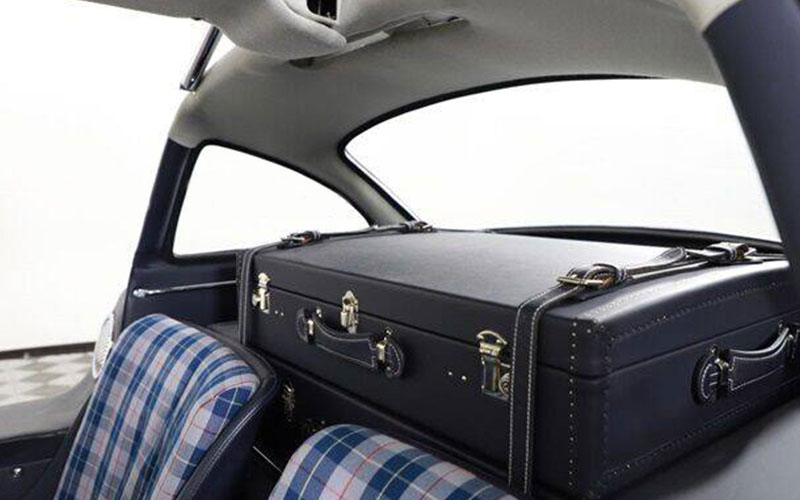
Other options included leather or plaid patterned cloth upholstery, a radio, windshield wipers, and any color other than the base silver (at the cost of $65). Performance upgrades included a competition camshaft, competition springs and shocks, and Rudge wheels.
Starting and Driving the 300 SL
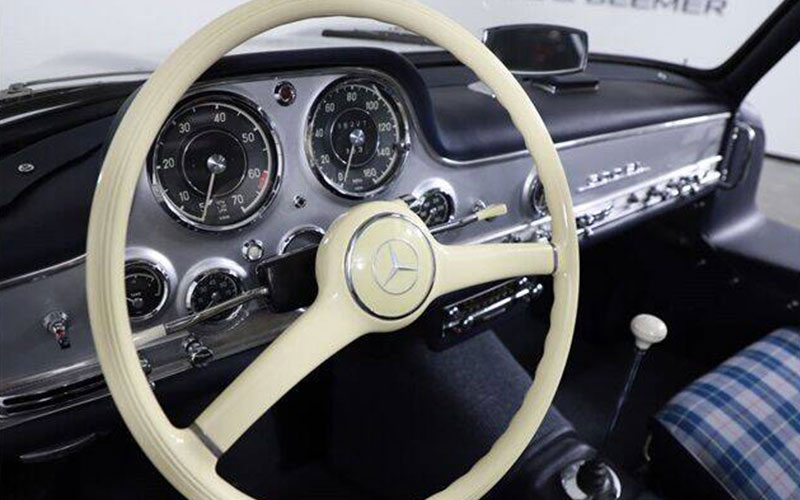
The Mercedes-Benz 300 SL was and remains a unique experience among vintage sports cars. Yes, it is certainly fast, and the inline-6’s rumble is as distinctive as any that emerged subsequently, but just getting into the car, starting it, and keeping it on the road are all unique experiences that add to the character of this classic.
Getting behind the wheel of the 300 SL is no simple task. The high door sills are also wide, necessitating a multistep process for ingress and egress. The 300 SL features a folding steering wheel to make getting into the car a little bit easier. This helps, somewhat.
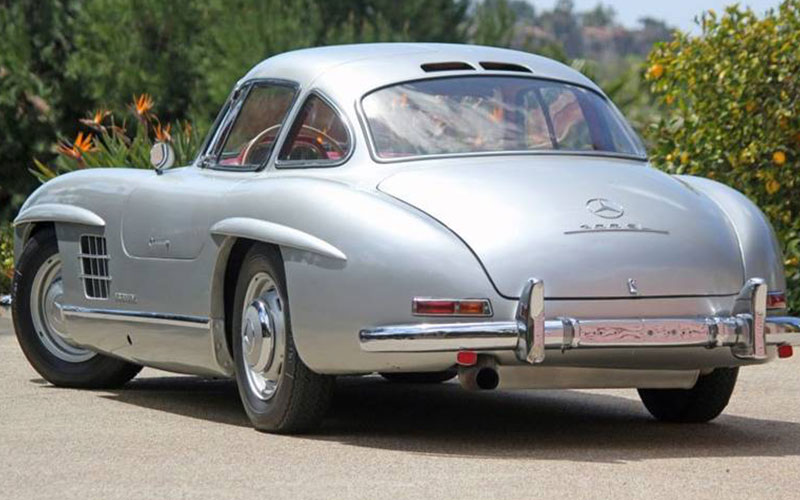
Once inside, starting the 300 SL is not a matter of just turning the key. First you insert the key and turn it part way to turn on the electrical system. From there you can start the electric fuel pump, pull the choke if it’s at all cool, then allow the fuel pump to run for a few moments, and then finally you can push the key inward and turn over the ignition.
The 300 SL is no less of a challenge to drive than it was to get into or start. At home at higher rev ranges and higher speeds, the 300 SL is well mannered on the road but demanded finesse when cornering at speed. The car tended to be tail happy and called for gas through corners thanks to the swing axle rear suspension which would alter the inside wheel’s camber and result in snap oversteer. But for those who learn the car’s characteristics, the reward is abiding in that 4,000 rpm range for some magnificent high-speed cruising.
An Appreciating Asset
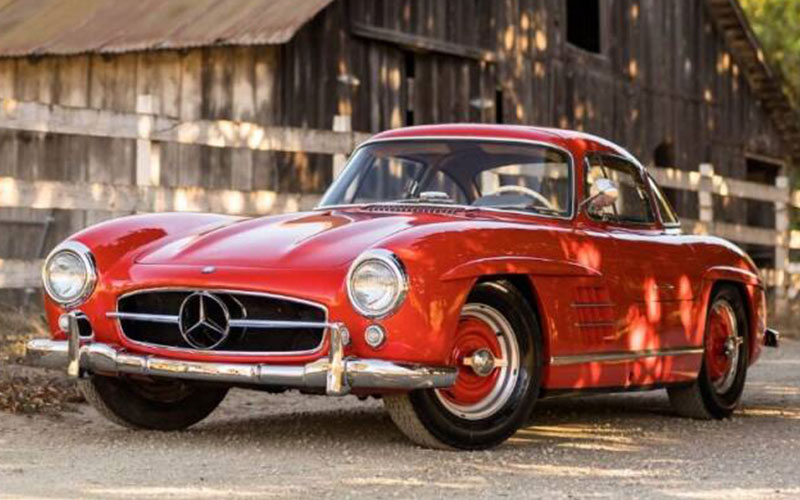
The Mercedes-Benz 300 SL was gorgeous, fast, and innovative car. It quickly inspired adoration from not just the automotive press but from wealthy and famous buyers as well. The first 300 SL sold went to a frequent client of Max Hoffman, the racecar driver Briggs Cunningham. Other famous 300 SL owners include Paul Newman, Sofia Lauren, Pablo Picasso, Frank Lloyd Wright, and Clark Gable, among many others.
The 300 SL was a darling of the rich and famous in the 1950s, but it’s perhaps even more of a hot commodity among high-end car collectors today. Valuations have been ballooning of late, with prices rising by nearly one hundred percent over the last five to six years. With a production run of just three years and only 1,400 ever made (and 1,200 known to survive today), the limited numbers of this uniquely significant car make it highly collectable.
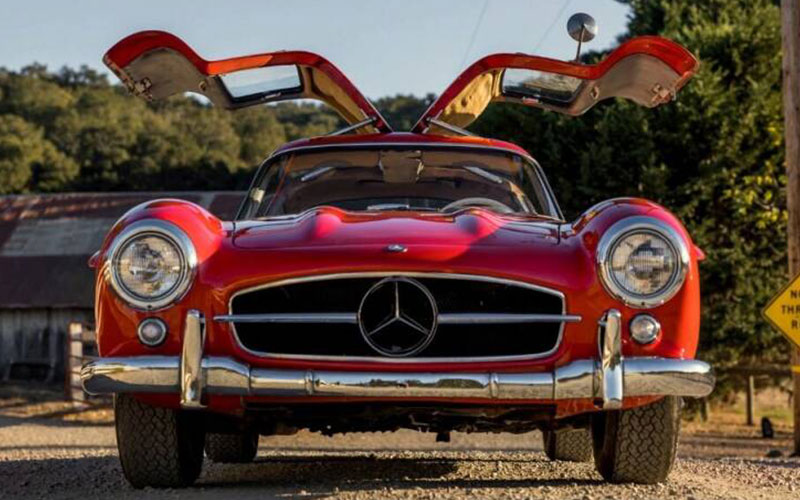
Today even barn find “gullwings” can run well over $750,000. For cars in good condition, exceeding that seven-figure mark isn’t hard. Most sorted “gullwing” 300 SLs are listed anywhere from $1.1 to $1.5 million dollars.
Transcending the Automotive
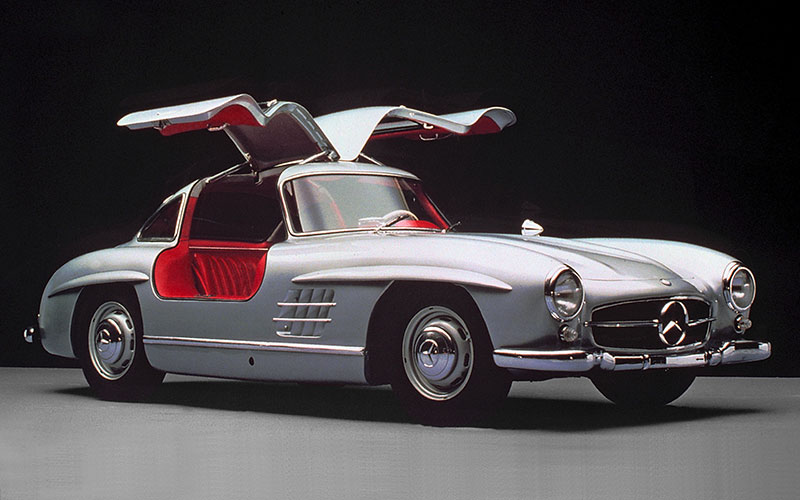
1954 Mercedes-Benz 300 SL – mbusa.com| Shop Mercedes-Benz SL Class on Carsforsale.com
Few industrial designs transcend their functions to enter the realm of high art, but the Mercedes-Benz 300 SL “gullwing” has done just that. The exquisite body lines, roaring engine, and distinctive, influential design elements make the 300 SL “gullwing” a work of art on the road and from behind the driver’s seat. An enduring (and highly desirable) classic, the Mercedes-Benz 300 SL “gullwing” is the most significant car Mercedes-Benz has ever produced and arguably the greatest sports car of the 20th-century.














